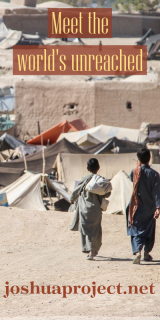Rice Missions and Rice Christians

As the years passed, I continued supporting myself by working in the construction trade while also studying part-time at a community college and working in Mexico. For a while, I worked at the Mexican municipal trash dump in Tijuana where Pastor Von had begun helping the people on his day off each week. The people there were truly a needy, hurting people. In many ways, they were friendly towards us and welcomed our visits each week. Violent things happened at the dump, mostly at night.
The homes were simple. Cardboard, tacked-on plastic, a scrap of board, an old car hood for one wall, all wrapped with wire to hold it together, and a couple of tires on top to keep the roof from blowing away. Few homes had outhouses. Fewer still had a septic hole dug underneath. It didn’t matter; everything flowed together into the dump.
The families there worked hard; at least until many well-intentioned Christian groups corrupted the dump with a mix of evangelism and welfare. As more and more groups began visiting the dump, some residents found it all too simple to just quit working altogether. The compassionate Christian visitors gave away so much stuff that the dump people could earn plenty a couple days a week in selling the American mercy gifts at swap meets. The weekends would be dedicated to “being poor” and receiving more goods from the generous Christian groups, a couple of days could be given to selling those gifts and the rest of the time, well, that’s another story.
In the early days, the people dug through the tons of trash arriving daily. First, any food still edible was picked out, then the long process of extracting treasures. A treasure was anything that had any value in itself, broken things that could be converted to useful things. A broken toy cart together with a bicycle tire rim, a piece of pipe and a broken shopping cart could be fashioned into a wheelbarrow of sorts! Then glass and metal were extracted to form piles weighing tons. This in turn was sold and the little profit yielded sustained the dump community.
Later I worked there with another missionary. He worked with the men of the community, joining them side by side in their struggle. A number of community development projects were carried out. My friend, Andres, had the confidence of the men, but making headway was difficult. For whatever reason, this missionary finally had a nervous breakdown, ending his work there. Things happened at the dump that perhaps twisted our views of “normal” living. Abused children, children who disappear, murder, rape, death and oppression were facts of life in the dump.
I remember one day one of my friends there called to me in a very aggravated tone. He was the head of one of the few homes that boasted a real family unit (a “husband” and “wife” and the children all from that relationship). As I approached, I saw tears in his eyes. He cried out in anger, “We are not dogs,” he motioned for me to follow him. We ducked through the low entrance of his cardboard home. “Look what my children found in the trash today,” he said. There on the floor were several aborted babies. A pile of them had been dumped “in our neighborhood,” my friend cried. And, to add insult to injury, for a joke, a few more fetuses had been thrown in front of this man’s humble home.
Life went on for good or for bad there. Many American Christian and secular groups found it a fantastic adventure “helping the dump people.” It was their “help” which made real ministry there difficult; the community had learned a new, “adjusted” lifestyle. During the week the people would joke about “Los Evangelicos,” the Evangelicals, who would come without fail every Saturday. They came with food and clothing and other gifts. The poorer that one appeared, the more he would be rewarded. And so it went; most every weekend, vans and buses and trailers would pull in over the hill to “help the dump people.” With cameras flashing, food and clothing were passed out. “Rice missions” produce “rice Christians.”
A few groups worked hard to really help those who needed assistance. They did all they could do to maintain the dignity of the people. These were very few and they could not hold back the tide of the multitude of groups which naively believe that Mexico can be evangelized with no more than a handful of Spanish tracts or a film and a bag of beans or rice. However, what they saw was convincing enough to them. I guess we just watched from a different perspective.
Week after week, the same people would “get saved” and be rewarded or “blessed” with some beans or rice or some other token expressing thanks for their response to the message. In time, the people learned that poverty was their most valuable resource. The worse you looked, the more you would be given. Many groups walked around like tourists in a zoo. Some would gawk and hold their noses while others clicked off photo after photo. Some groups would stand on top of their bus or van and throw food and clothing into the unruly crowd. As the people fought over the nicer items, they were photographed. In later years, some of those in the dump learned to charge for their photo. There are endless stories best left behind in that smoldering dump along with the piles of burning dogs, the aborted babies, the trash and the corruptions left by many well-meaning ministries.
Christian missions could learn a lot from the dump. Much would depend on the vantage point, I suppose. Evangelism without teaching and discipleship can be a disaster. It’s happened many times. A great deal of harm and destruction can be caused by “the ministry.” The sad thing is the “evangelist” may be the last to ever realize what has been done.
Another sad reality is that although Tijuana boasts of many strong Mexican churches, in the years we frequented the dump, we never saw a Mexican church attempting any ministry there. Those most capable of meeting most of the real needs would not mix with these people of the dump. I do believe that God could have done a real great work there if some, or at least one Mexican church would have really gotten involved, really taught and discipled the people. The ministry they needed the most and those most capable of really helping them never quite arrived. The dump ended up being a fairly hopeless place to minister. In my personal opinion, in many ways, “missions” made it so.
Editor’s Comment:
This actual account illustrates very well the inherent flaw in what could be called “felt need” or “symptomatic” aid. Not all homeless people are willing to “get a job” when handouts supply their basic needs. In this case, however, it is clear that the dump dwellers were already working for a living (isolating different metal or glass items, fixable items, etc.) and would have welcomed a more humane activity for making a living. But instead of mission workers going to the trouble of helping them find that more humane role, they are meeting their immediate (“felt”) need for handouts they can eat or sell. That can continue forever. In order to qualify for handouts they are forced to stay “in the dump.” In a case like this something more is needed than “discipling."








comments